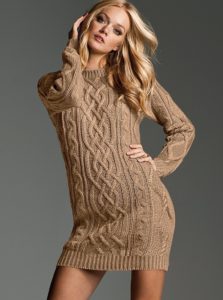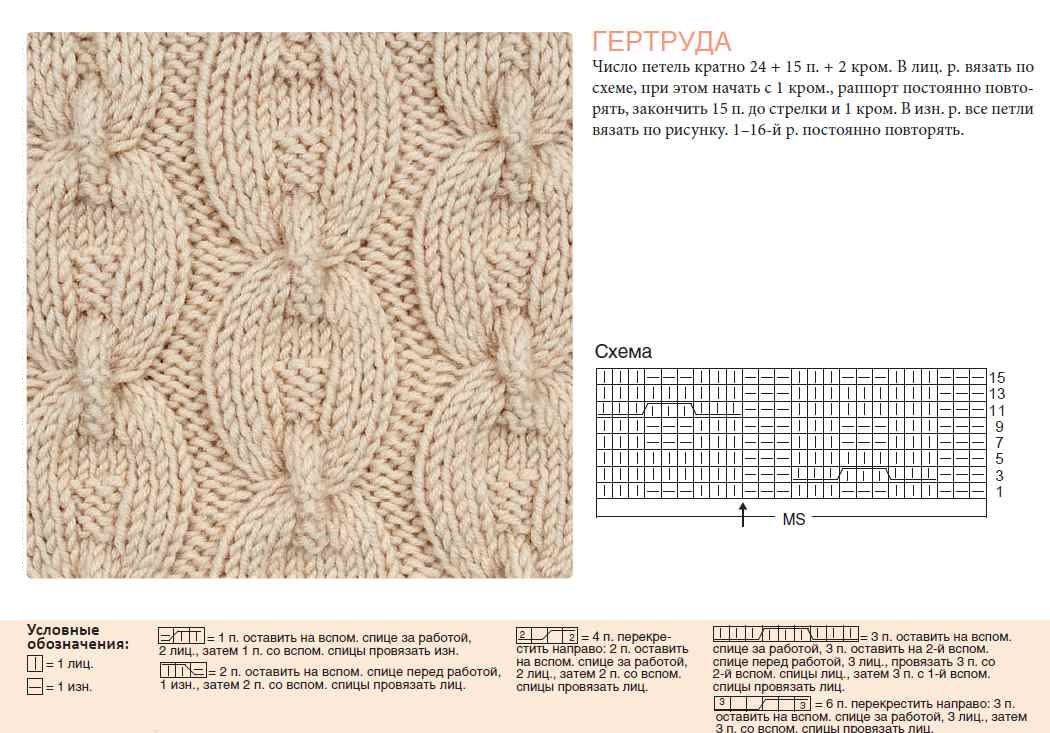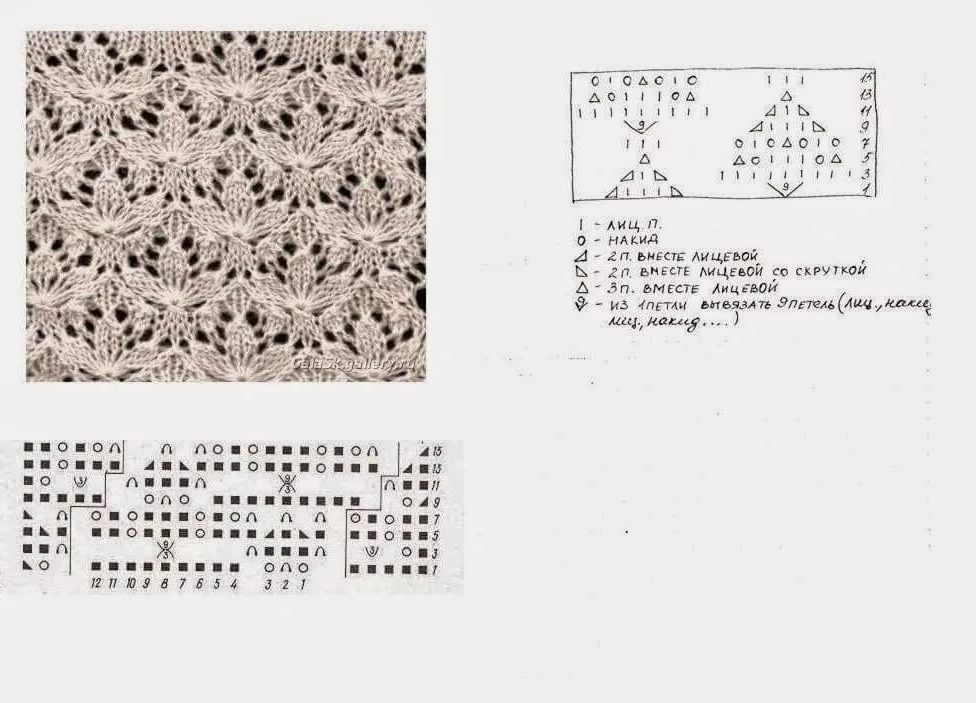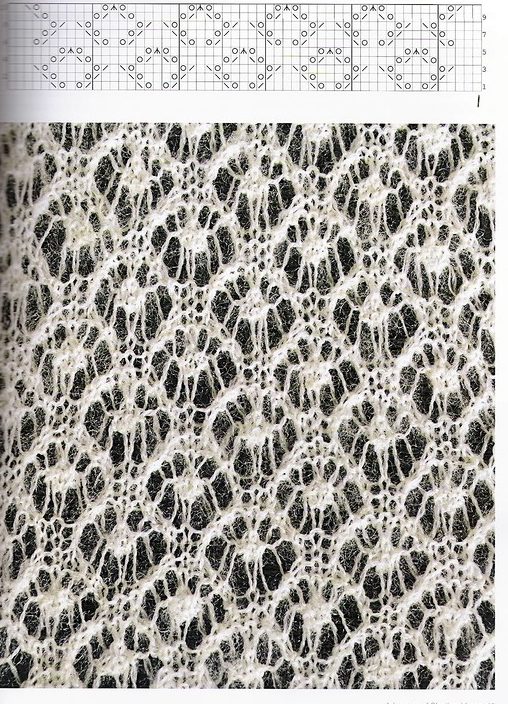 A knitted dress is always a very voluminous product. Patterns for hats and other smaller items are challenging. It happens that you like the model, but not so much the ornament. Searches also take time. Special selections help out. They contain already selected patterns that craftsmen often use to create a dress, blouse and other product. Let's take a closer look at the dress and the ornaments that the craftsmen use for them.
A knitted dress is always a very voluminous product. Patterns for hats and other smaller items are challenging. It happens that you like the model, but not so much the ornament. Searches also take time. Special selections help out. They contain already selected patterns that craftsmen often use to create a dress, blouse and other product. Let's take a closer look at the dress and the ornaments that the craftsmen use for them.
Basic elements of patterns for knitting dresses
 When you first think about a knitted sundress, very voluminous aranas in the center immediately pop up before your eyes. Different weaves of braids have become so common in creating dresses. Therefore, it is worth noting them first among the schemes. Moreover, they have become so popular, and not only for making dresses.
When you first think about a knitted sundress, very voluminous aranas in the center immediately pop up before your eyes. Different weaves of braids have become so common in creating dresses. Therefore, it is worth noting them first among the schemes. Moreover, they have become so popular, and not only for making dresses.
Of course, a feminine dress without lace or openwork is unthinkable, and such patterns are also worth paying attention to. Unusual designs using different levels of geometry are becoming very popular.This includes playing with knit and purl stitches and working with yarn overs.
Knitting patterns for women's dresses
A selection of very common options for knitted dresses. All the most beautiful types that are often used by masters and used by beginners.
Pattern schemes for warm dresses
A warm knitted dress must have a tight version, and braids are very popular among tight ones. Moreover, they also make the canvas more voluminous.

Braids look great with diamonds and bumps. All this on the reverse surface further highlights the type of fabric.

Charming chains of braids. A very unusual canvas.

This option is equally popular for both vests and knitted dresses.

A small reminder of diamonds, but the motif is not angular; all the corners are soft and neat.
Aranas are highly valued for dresses. It is very difficult to knit them, you have to constantly change the loops, but the result is much larger in volume than regular braids. A good option for a warm item.

A combination of several techniques will work well in the center of the product.

A strip of elongated arans will visually elongate the silhouette.

Chains and wonderful weaves, you just can’t take your eyes off the binding lines.
On a note! We should not forget about simple canvases. These are the front surface, the back and geometric figures when combining these fabrics.
A craftsman who decides on beautiful fitted models should definitely evaluate patent elastic and models made from it.

Unusual shell on the reverse fabric. A very positive drawing for a little thing.

Knitting patterns for summer dresses
Summer items usually require thin yarn and not so warm. Something very lacy would sit well on such fiber. For example, openwork patterns. Among the most popular summer dresses, the most chic ones are selected below.

It looks like a neat fern. Beautiful and even leaves in one row.

Numerous yarn overs and the fabric are completely covered in small holes. A product made from such a pattern will definitely not overheat.

Important! Yarn overs highlighted in blue in the diagram are lowered from the knitting needle in the next row. These yarn overs form broaches.
The two techniques were combined and the result was simply something. These are leaves and openwork. The finest threads simply do not allow you to unravel the canvas until you look at the diagram itself.
Description of knitting Shetland patterns
 Shetland patterns are a very interesting technique. For those who are at least a little involved in knitting, it’s worth paying attention to a couple of these. Then it will simply be impossible to tear yourself away. You get such elegant canvases.
Shetland patterns are a very interesting technique. For those who are at least a little involved in knitting, it’s worth paying attention to a couple of these. Then it will simply be impossible to tear yourself away. You get such elegant canvases.
Simple technique.
Each consists of facial loops and yarn overs. Moreover, yarn overs are also created in the reverse fabric. As a result, the knitting is double-sided. It is better to use thin threads when knitting such patterns. And what kind of things come out of this technique? Below is the most elementary version of the Shetland schemes in detail.

Pattern Description:
- 1st row: 5 k/p, 2 stitches together with a slant to the right, yo, k/p, yo, 2 loops together with a slant to the left, 1 k/p and repeat from the beginning.
- 2nd row - 3rd row according to the same principles, but increasing along the loop between the yarn overs and decreasing the front.
- Next, the diamond narrows and the yarn overs end up outside the loops that are knitted together with the bends. In the 6th row between yarn overs, knit 3 loops together.
- The result is an airy openwork that is often used for summer items (dresses, blouses).
Knitting patterns for children's dresses
 Children's things should not only be bright, but also have attractive patterns.
Children's things should not only be bright, but also have attractive patterns.
- Adorable hearts made from capes.
- Charming diamond patterns and many other patterns are very popular.
- Braids are becoming no less relevant.
- Aranas can also be used, but do not overload things with such dense patterns.
The thing should be comfortable and the lighter it is, the more convenient it will be for the child to play with it and enjoy the lovely product.


 2
2





